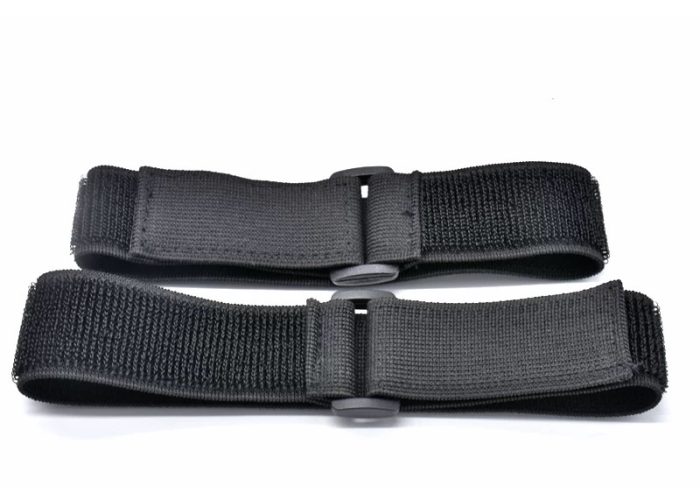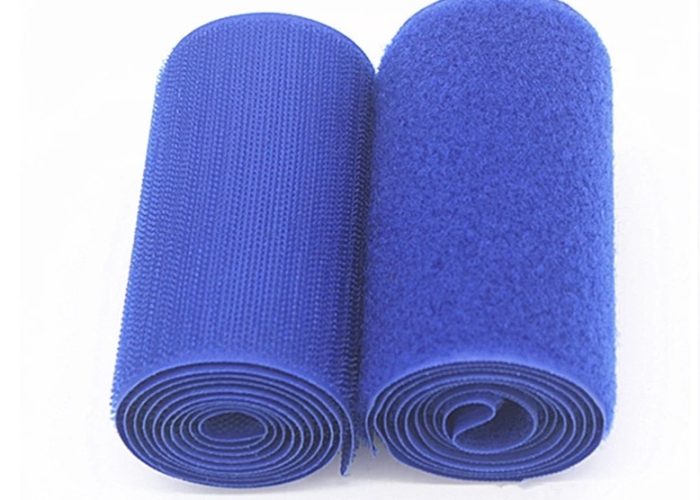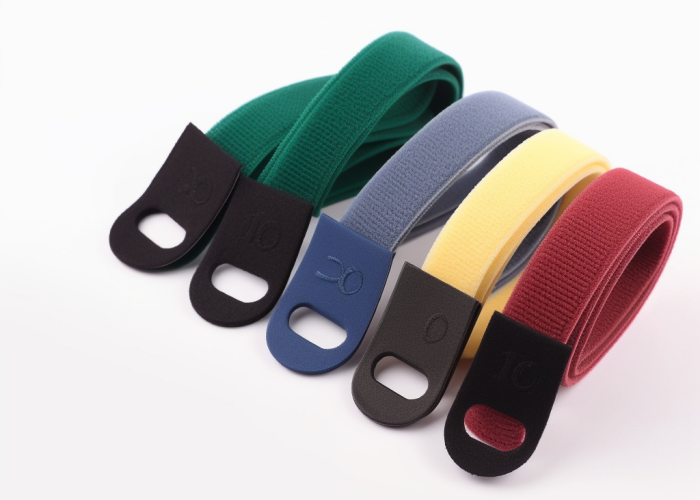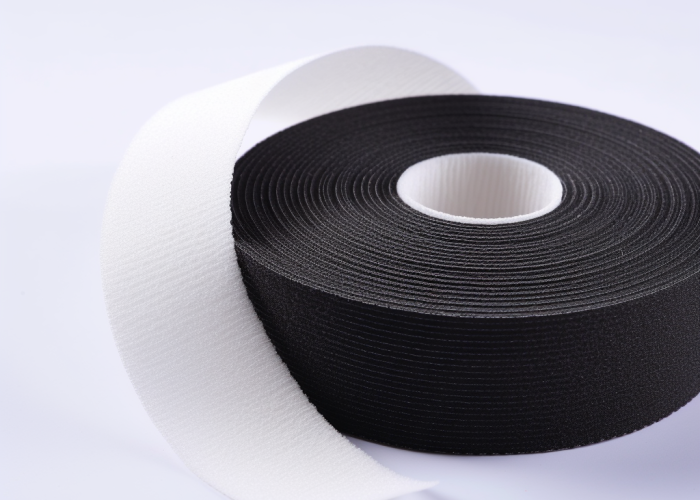Selecting the right fastening mechanism is critical for product integrity and performance. In the world of industrial webbing, the terms “Velcro strap” and “self-adhesive strap” are frequently used interchangeably, leading to confusion about their distinct properties and applications.
No, Velcro straps are not the same as self-adhesive straps. Velcro straps utilize a hook-and-loop fastening system that mechanically interlocks two surfaces, while self-adhesive straps feature chemical adhesives that bond directly to surfaces without requiring a mating component. This fundamental difference affects their application suitability, reusability, and attachment requirements.
Explore how different fastening systems work, compare materials, and get expert guidance on choosing the best option for your application and environment.


Webbing manufacturing expert with 15+ years of experience helping product developers build high-performance straps for industrial, medical, and outdoor use.
A Velcro strap is a fastening system that uses hook-and-loop technology to create secure, reusable attachments. The system consists of two distinct sides—hooks and loops—that mechanically interlock when pressed together and separate when pulled apart.
The hook side contains thousands of tiny rigid hooks, while the loop side features soft, flexible loops. When pressed together, these components create a strong connection that can withstand considerable force yet can be easily separated when needed. This purely mechanical fastening mechanism distinguishes Velcro straps from adhesive-based fasteners.
Unlike self-adhesive straps, Velcro straps don’t rely on sticky substances to create bonds. Instead, they use the physical engagement between hooks and loops, making them ideal for applications requiring repeated use, adjustments, or temporary connections.
Key Takeaways:
High-quality Velcro straps are primarily manufactured using nylon, polyester, and polypropylene, each offering specific performance characteristics for different applications. These synthetic materials provide the durability and flexibility required for repeated use while maintaining fastening strength.
Nylon Velcro straps feature high strength-to-weight ratio and excellent abrasion resistance, making them suitable for applications requiring durability and load-bearing capacity. The material’s natural flexibility allows for secure fastening while maintaining a degree of elasticity that prevents premature wear.
Polyester variants offer superior UV resistance and water-repellent properties, making them ideal for outdoor applications. This material resists degradation from sun exposure and maintains its fastening integrity even after prolonged environmental exposure.
Polypropylene options provide lightweight, waterproof alternatives that resist chemicals and moisture. These straps are particularly valuable in applications where weight considerations are paramount or where exposure to liquids is expected.
Key Takeaways:

Velcro straps use mechanical hook-and-loop fastening while self-adhesive straps rely on chemical bonding to surfaces. This fundamental difference affects their application methods, reusability, and surface requirements, making each option suitable for different scenarios.
Velcro straps feature a hook-and-loop system that requires both components to create a secure attachment. This mechanical interlocking allows for repeated attachment and detachment without degradation in performance. In contrast, self-adhesive straps use pressure-sensitive, heat-activated, or solvent-activated adhesives that create bonds with the application surface.
Attachment to surfaces differs significantly between these options. Velcro straps typically require mating surfaces with compatible hook and loop sides, while self-adhesive straps can adhere directly to various materials including metals, plastics, fabrics, and composites without requiring a matching component.
Feature Velcro Strap Self-Adhesive Strap
Fastening Mechanism Hook-and-loop (mechanical) Chemical adhesive bonding
Hook-and-loop System Yes No (usually)
Adhesive Backing No (except in specialty versions) Yes
Attached to Surfaces Requires mating component Adheres directly to materials
Reusability High – maintains strength through multiple cycles Limited – adhesive weakens with each use
Adjustability Excellent – easy to reposition Limited – may damage surfaces when repositioned
Applications Medical braces, cable management, removable components Permanent mounting, single-use applications
Reusability represents another major distinction. Velcro straps maintain their fastening capabilities through numerous attachment cycles, making them ideal for temporary or adjustable applications. Self-adhesive straps, particularly those with pressure-sensitive adhesives, may lose effectiveness after removal or repositioning.
Key Takeaways:
Velcro straps excel in applications requiring frequent adjustment, temporary fastening, or where reusability is essential. Their unique combination of secure attachment and easy release makes them particularly valuable across medical, industrial, and consumer product sectors.
In medical settings, Velcro straps are widely used for securing braces, dressings, and CPAP masks. Their gentle attachment method prevents skin irritation while providing reliable fastening that can be quickly adjusted by healthcare providers. The non-permanent nature of the fastening system makes them ideal for temporary medical applications.
Industrial implementations frequently utilize Velcro straps for cable management and organizing bundles of wires. Their adjustability allows for easy installation and modification as systems evolve, while their strength provides reliable retention even in vibration-prone environments. The ability to quickly release and reattach makes maintenance procedures more efficient.
Consumer applications benefit from Velcro straps’ user-friendly operation and reliability. From footwear and apparel to luggage and sporting equipment, the intuitive fastening mechanism provides secure closure that can withstand active use while remaining easy to operate even for users with limited dexterity.
Key Takeaways:
Velcro straps demonstrate variable performance across different environmental conditions, with specific considerations for moisture, temperature, and UV exposure. Understanding these performance characteristics is essential for selecting appropriate materials for specific application environments.
In wet conditions, standard nylon Velcro may experience temporary reduction in holding strength, though specialized moisture-resistant variants are available. Polyester-based Velcro straps maintain better performance in humid or occasionally wet environments due to their inherent moisture resistance and quick-drying properties.
Temperature variations affect different Velcro materials differently. Most standard Velcro straps function effectively within normal temperature ranges (0°C-40°C), but extreme heat or cold may impact fastening strength. High-temperature applications require specially formulated materials designed to maintain structural integrity and fastening capability.
Outdoor exposure introduces concerns about UV degradation, particularly for straps used in exterior applications. UV-resistant polyester Velcro straps offer superior performance for such implementations, resisting the brittleness and deterioration that typically occurs with prolonged sun exposure.
Key Takeaways:

Velcro straps can be customized in width, length, material composition, and attachment methods to meet specific application requirements. This adaptability makes them versatile solutions across diverse industries and use cases.
Width variations range from narrow 10mm straps for lightweight applications to broader 50mm+ options for heavy-duty implementations. Choosing appropriate width affects both the strap’s load capacity and its fastening strength, with wider straps generally providing greater holding power for demanding applications.
Material selection offers another customization avenue, with options including standard nylon for general use, UV-resistant polyester for outdoor applications, and specialized variants for extreme conditions. Material choice affects not only durability but also flexibility, weight, and environmental resistance.
Backing options extend customization further, with possibilities including sew-on, adhesive-backed, or weldable variants. For applications where permanent attachment of the Velcro base is required, adhesive-backed options provide convenient installation, while sew-on versions offer maximum durability for textile applications.
Key Takeaways:
Engineers should choose Velcro straps when applications require reusability, adjustability, or temporary fastening that can be easily secured and released. Understanding the comparative advantages helps ensure optimal fastening selection for specific design requirements.
Reusability represents a primary consideration. Velcro straps maintain their fastening capability through hundreds or even thousands of attachment cycles, making them ideal for applications requiring frequent access, adjustment, or maintenance. Self-adhesive alternatives typically offer limited reuse potential, with adhesive strength diminishing after each detachment.
Load-bearing requirements also influence selection decisions. Velcro straps provide excellent tensile strength when properly sized and installed, making them suitable for securing components under mechanical stress. The hook-and-loop mechanism distributes force evenly across the fastening surface, reducing the risk of sudden failure.
Temporary attachment scenarios strongly favor Velcro implementation. Unlike permanent adhesives that may damage surfaces upon removal, Velcro straps can be attached and detached without leaving residue or causing substrate deterioration. This makes them particularly valuable in prototype development, testing environments, or applications requiring eventual disassembly.
Key Takeaways:

Velcro straps and self-adhesive straps serve distinct fastening needs through fundamentally different mechanisms. For applications requiring reusability, adjustability, and non-permanent attachment, Velcro straps offer superior performance. As custom webbing manufacturers, we can develop tailored Velcro strap solutions with specific materials, dimensions, and attachment methods to meet your exact engineering requirements.
Key industry standards for Velcro straps include ASTM D5169 for peel strength testing and ISO 9001 for quality management systems. Specific applications may require additional certifications such as medical-grade materials compliance, flame resistance ratings, or automotive interior material specifications depending on end use.
Velcro straps typically maintain fastening strength for 3,000-5,000 attachment cycles under normal conditions, far outlasting self-adhesive options. High-quality hook-and-loop materials resist wear, environmental exposure, and repeated use while maintaining consistent performance, unlike adhesives that degrade significantly after each use.
Yes, Velcro straps can be customized with specific widths, materials, backing options, and attachment methods. Custom solutions include specialized hook-and-loop combinations, adhesive-backed installation bases, sew-on variants, and industry-specific designs optimized for particular environments, loads, or attachment surfaces.
When evaluating costs, consider initial purchase price alongside reusability, installation time, and maintenance factors. While Velcro straps may have higher upfront costs than some self-adhesive alternatives, their reusability, faster installation/removal, and reduced surface damage during replacement typically result in lower total lifecycle costs for applications requiring multiple use cycles.
The primary safety considerations for Velcro straps include proper sizing, load capacity verification, and securing loose ends. Exceeding rated capacity can lead to unexpected detachment, while loose strap ends may create entanglement hazards. Always ensure straps are rated for the intended application and properly secured.
Velcro straps are strongly preferred in applications requiring frequent adjustment, inspection, or reuse. They excel in medical devices (CPAP masks, braces), equipment with regular maintenance needs, and situations where components must be easily removed and reattached without degrading fastening strength.